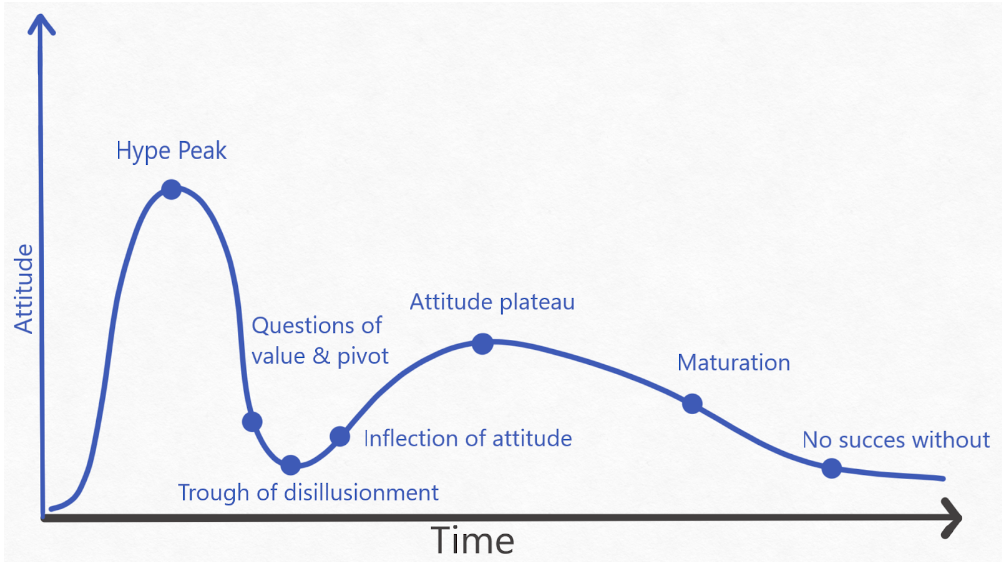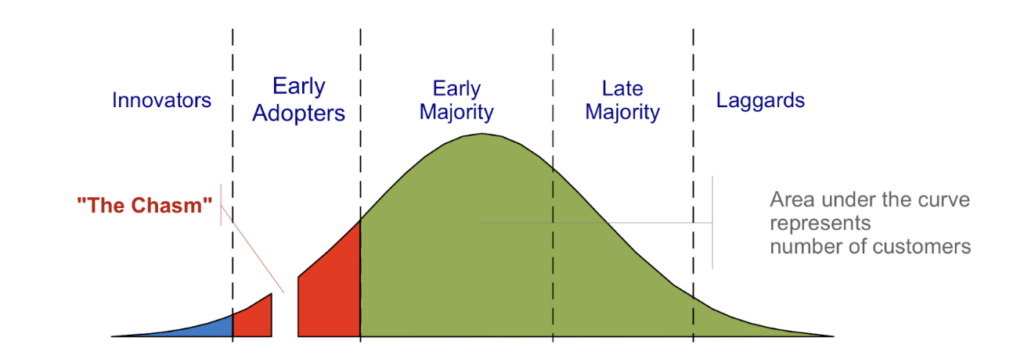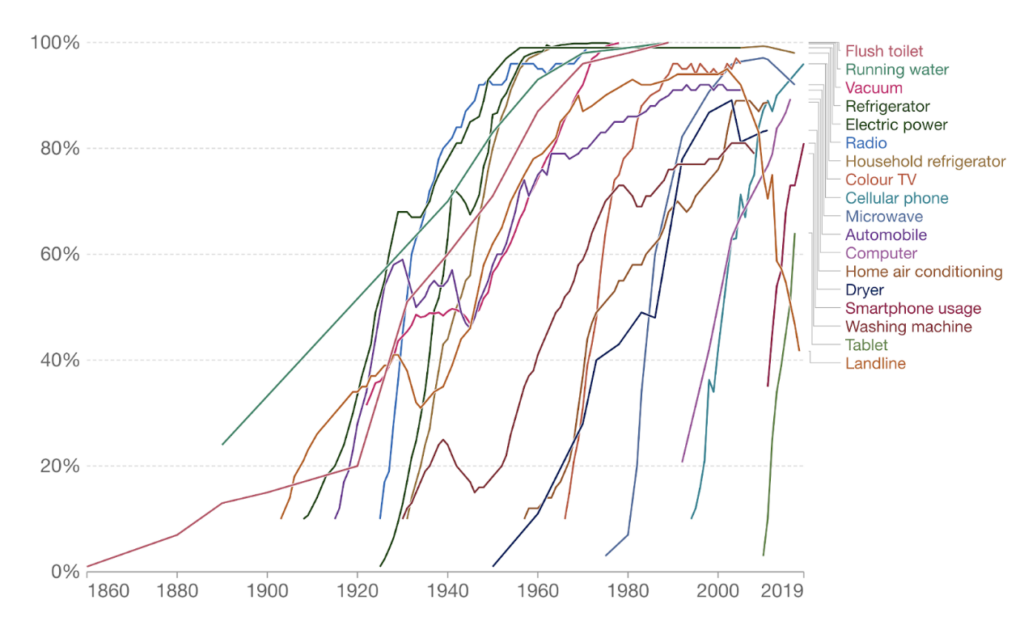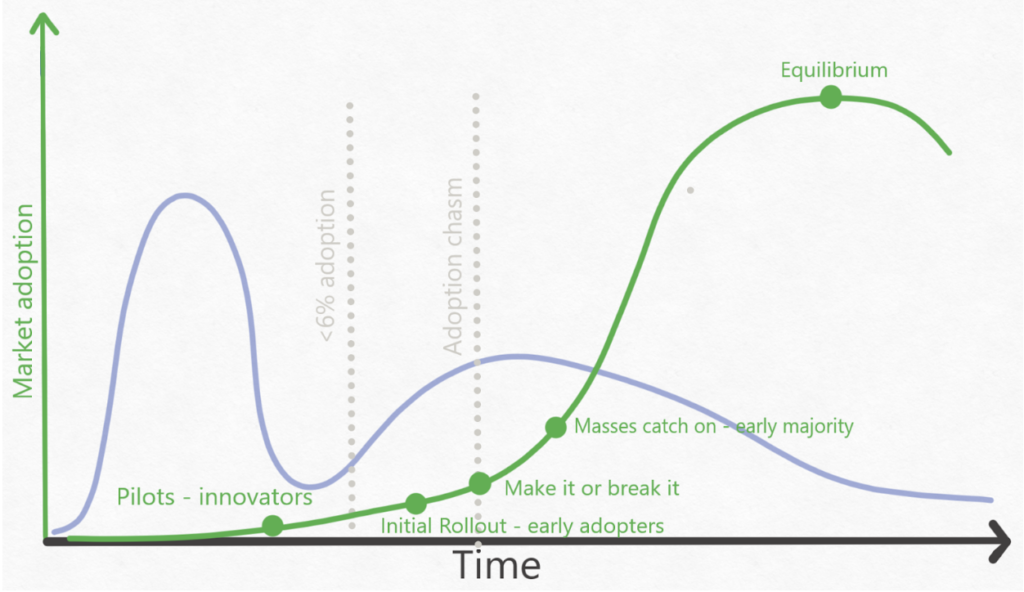Learn to surf the tide of change

Trans -wait for it-,… itions
We live in turbulent times. We are constantly bombarded with news about amazing social and technological developments that will flip the world upside down. At the same time, it feels like nothing really changes.
Where are the flying cars we were promised? Where is the sustainable revolution? It even seems to revert sometimes. But the opposite is true. We are at the tipping point of profound transitions – societal and technological. But the acceleration is only happening now. This is the decade of transformation.
Why doesn’t it seem that way? That’s because transitions start out messy. But if they gain momentum, transitions are unstoppable. There are huge sustainable transitions now surging and about to come down. Either you choose to surf them, or get overwhelmed by the crash.
Of course, as impact strategists and coaches, we can help you ride this change. By identifying the true change that is happening and adjusting your company accordingly. We’ll start out helping you understand the nature of transitions. This by using 3 models: the hype cycle, the adoption life cycle, and the s-curve.
(for now I focus on technology, because that’s better documented, but the same frameworks hold for changes in societal thinking)
Hype cycle
There are plenty of examples of overhyped technological promises, only to disappoint us (at first). It’s the combination of our novelty seeking psyche, investment hungry entrepreneurs and the sensationalist media-machine that all inflate the importance of potentially transformational technologies. Only for everyone to feel jaded when reality kicks in.
It’s because of different reasons;
- The expectations of new technology are often highly conflated, think for example about how green hydrogen was set to change the world.
- The market isn’t ready yet – Microsoft launched a tablet 10 years ahead of the iPad.
- The product isn’t mature enough (yet) – like early EVs (electric vehicles), not catching on because of their poor range compared to cars with a combustion engine.
The market potential might be there – but the product and/or context aren’t ready yet. So we go through this emotional rollercoaster (varying in intensity) called the Gartner Hype Cycle;
- starting with a technology trigger
- leading to highly inflated expectations
- a through of disenchantment (this is also where some tech comes to die)
- and a slope of enlightenment where the tech and its uses mature
- into a new status quo
Think about how solar power would save the world with free electricity, only for everyone to realize you could barely power your home with it (let alone in winter). But now as the solar power technology matures, and batteries are added to a wider mix of renewables on the grid, it has become an interesting source of energy for our homes and the power grid.
Sounds interesting right? Take a look here how hypes were evolving in 2022.

The innovation adoption lifecycle
Related to the hype cycle is the adoption lifecycle, as displayed below. New tech isn’t bought by the masses of businesses/citizens/consumers all at once. It starts with a small group yearning for something harder, better, faster or stronger. The innovators and the early adopters. They are willing to adapt, try something new.
If the tech is able to speak to the hearts and minds of the broader populace, it stands a shot at making it big. It needs to mature and be appealing enough (but also the circumstances it operates in need to adapt).

We can see that now with electric vehicles (EVs), beating out the old school internal combustion engines (ICE).
- In 2019 2,5% of new cars worldwide where EVs
- In 2023 it’s set to be 18%
That is a major market growth – and indicates the leap from early adopters using EVs towards the majority of people.
But it doesn’t have to go that way. What if EVs still had poor ranges? Or there would be no investments in infrastructure? (there is luckily). Then EVs wouldn’t be able to cross “the chasm”. That is the gap between novelty loving innovators and the majority of people.
Because the majority of users (be it business or people) want something that has benefits and is reliable.
But for EVs, with a mature technology, a populace that is ready and infrastructure being rolled out, everyone is getting onboard.
The S-Curve
So once that chasm is crossed, and the majority is buying, exponential growth happens. And this is the confusing part. Because our human minds are trained to understand linear growth, not exponential – we expect change slowly but steadily. But transitions are always exponential. Think about the first iphone, and how it only took a few years before everyone had a smartphone.
At the graph below there isn’t even data for most tech below the first 10% of growth. Partially because it was slow, messy and seemingly unimportant. But at around 10% we take note – and the rocket takes off.


The pervasion of technology neatly lines up with the hype cycle. As seen illustrated above, as technology matures the majority can catch on. And only then will transitions skyrocket towards 90-100% adoption rates.
Riding the incoming Green S-Curves
We are at the onset of lots of sustainable change, even though it feels far off. Tech is maturing, markets adapting, and governmental powers are influencing the context by means of legislation, stimuli and restrictions.
Think about the American Inflation Reduction Act, the Green Deal in the EU and the move of China focusing on a sustainable economy. These will are all stimulating and facilitating these major transitions.
These context changes are already helping to transform the socio-technical landscape:
- 80 (and counting) clean energy factories have been announced in the USA
- The European Carbon Border Adjustment Mechanism will stimulate a new wave of clean resources within and outside its borders.
- And China as the leader in PV-panel, EV production is set to become the number one in green hydrogen technology as well.
It’s too late to hope for change to hold out. If you want to stay ahead of the competition and be part of the sustainable transitions, you better start paddling towards the waves now.
EVs and renewable energy are clear examples, but other major changes in food production (precision fermentation), transportation (autonomous vehicles) and the nature of manual work (robotization) and service work (generative AI) are bound to happen in the near future as well. And they will all happen faster than we estimate.
If sustainable change is in time to prevents the worst effects of climate change and biodiversity loss remains to be seen – but that the society is tipping in a new direction is clear.
At Rainbow Collection we are well aware of green transitions happening right now. Want to surf this tide of sustainable societal transformation with us? Give us a heads up, and we can talk about designing your future proof ESG strategy.